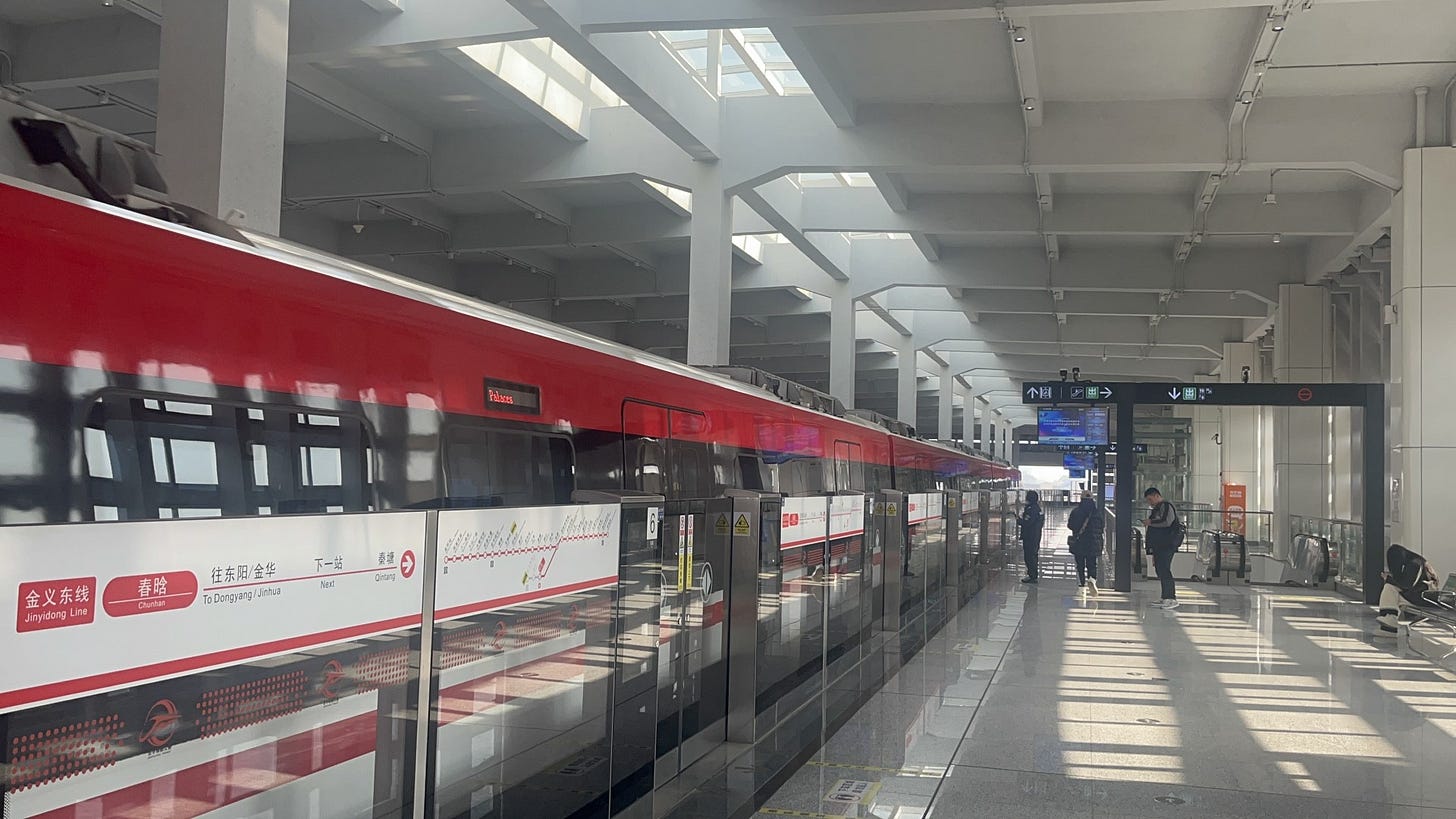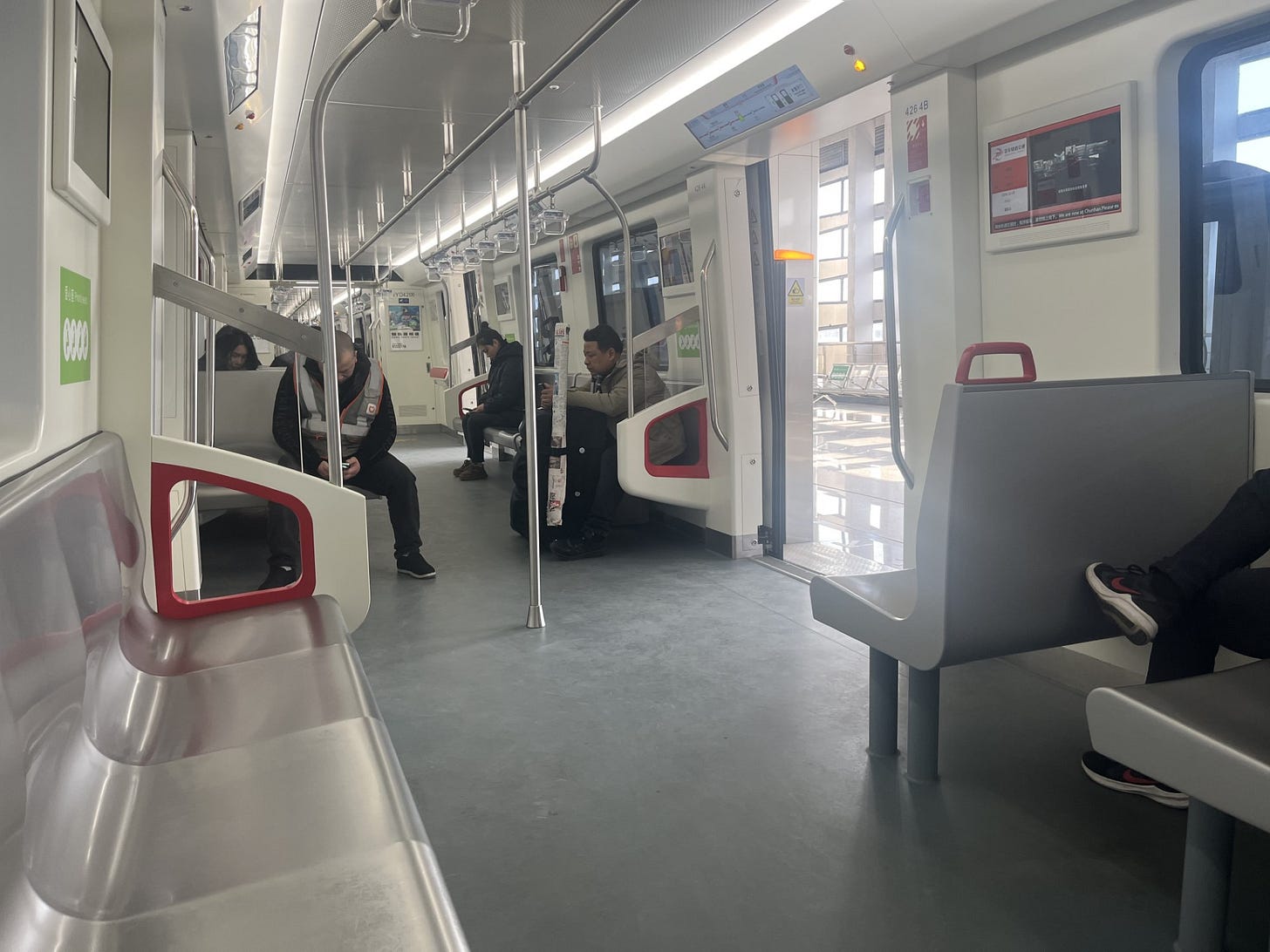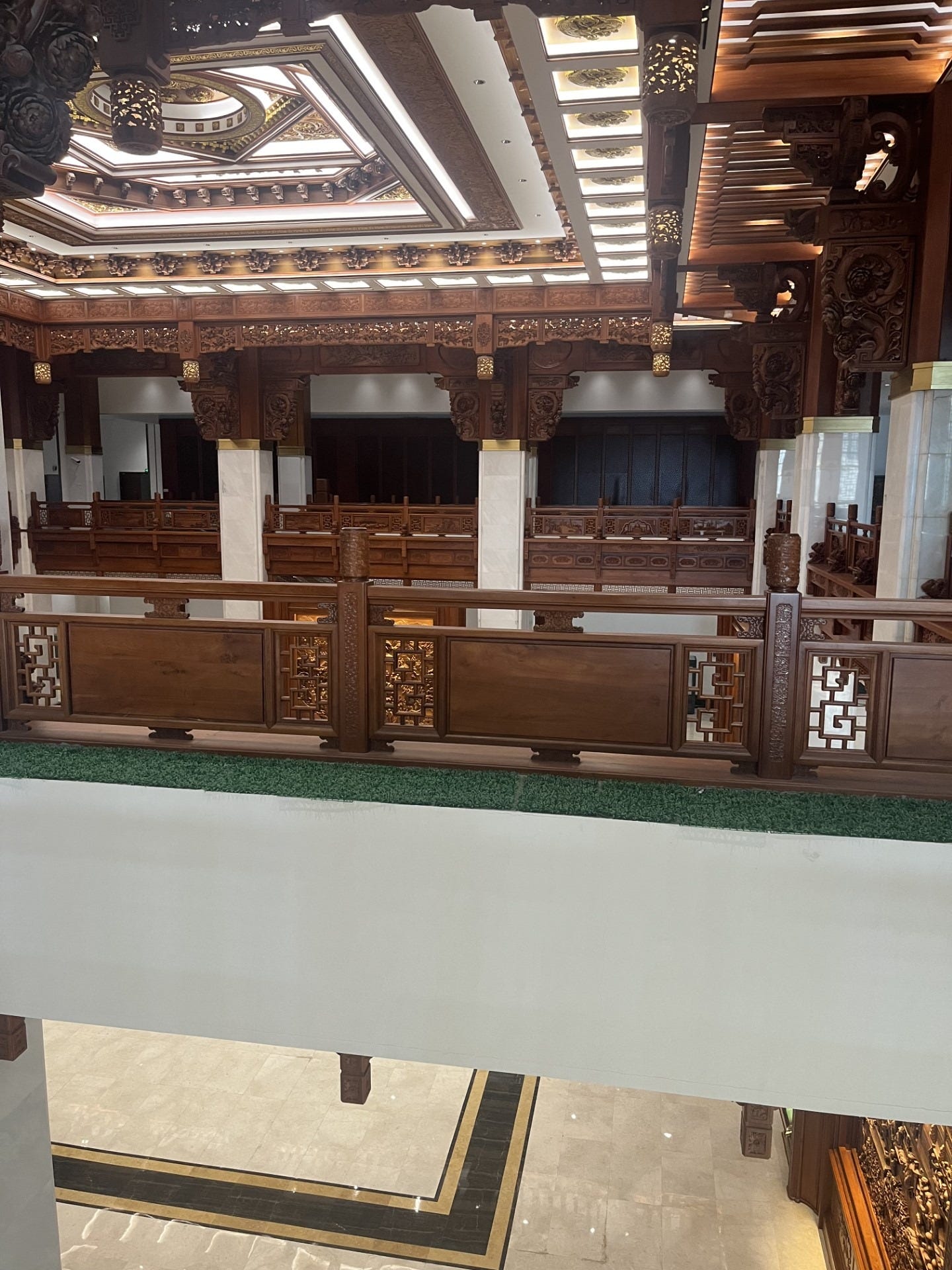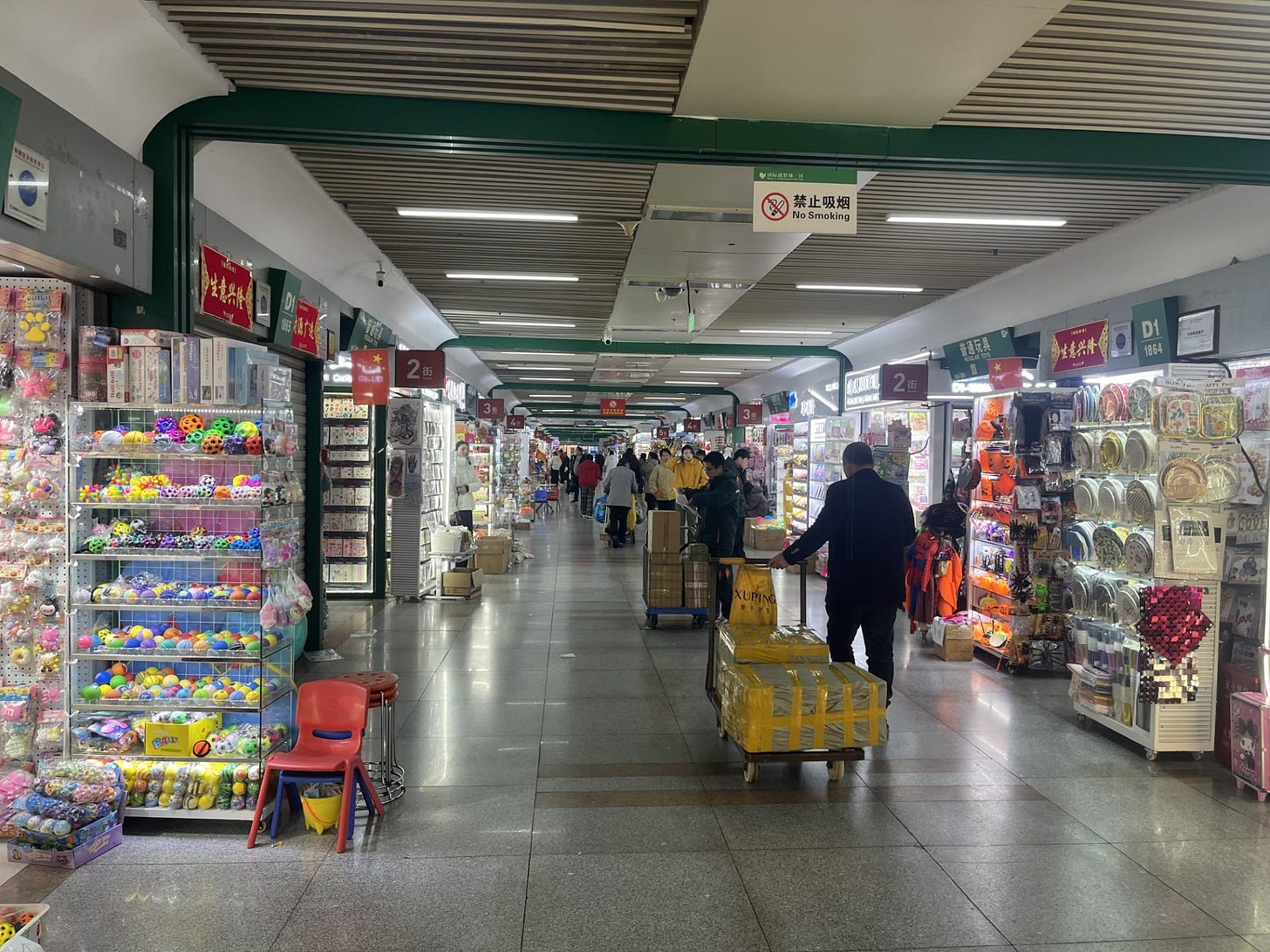Jinyidong (金义东) Trip Part 2: Museum and Market
Going to the Dongyang Woodcarving Museum and Yiwu International Market.
Read the previous installment here:
I went to the nearby metro station to go to the Dongyang Woodcarving Museum. On my way there, I passed by a scene that I would eventually realize is the norm in Yiwu. There were 4 over 1 (4 floors of residential over 1 floor of commercial) buildings where at least the first floor was being used for small-scale manufacturing, packaging, and shipping operations. None of these looked like they were branded as part of a big corporation or anything, they looked family run or rather small-time. The street was almost entirely quiet and empty except for a group of people loading up a really beatdown truck. A lot of these photos are taken semi-discreetly or from a distance because I didn’t want to just stand right there and take pictures of people.
There were few people in the metro station at 1:30 p.m. on a Friday. The station was quite new and clean, with electronic screens. The main road the station was over had little traffic.
The inside of the metro was fairly unique because there were seats facing perpendicular to the length of the train. No other city metro I’ve been to in China at this point has this, which I think is only because Jinyidong ridership isn’t high enough for the inefficiency to matter. I never had trouble finding a seat.
Chinese metros (and highways) are really high in the air when they are above-grade (above ground), which I think is probably quite unique in the world and makes for very impressive views. The air quality looked awful, which makes sense given the geography of basically being in a valley surrounded by mountains during the winter. It’s a real shame because the mountains that ring the city would look just stupidly beautiful if any color could be seen on them. Instead, they appear as layered, gray silhouettes in the distance, which is still wildly beautiful as it is. They reminded me of ancient Chinese paintings, which mostly use black ink anyways.
Dongyang is clearly the smallest of the three cities, and they seem to be trying to really lean into the woodcarving thing around the woodcarving museum. There’s a large building next to the museum that is called the Dongyang Woodcarving City (东阳木雕城), which I think is the name they have for that entire area. That building didn’t look very shiny or clean, and for the most part looked like it was being used for the same small-scale industry inhabiting the 4 over 1s that I had described before.
The entrance to the museum was hard to find, especially since there was no line. In fact, there was basically no one there. I don’t know if it’s of any significance, but the first flag I saw at the intersection next to the museum was the Palestinian flag. I found that to be nice. Across from the museum is an equally enormous convention center that I don’t imagine is being used either. I originally thought it was a party space because there were giant letters on the front that said it, and that might still be partially right.
At the security check, I realized I forgot my passport at the hotel. When one of the guards started naming stuff that I could use like social security number (社保号), I said I was a foreigner. The other guy told me to just go in. I was really thankful for that because I would have been really depressed if I had spent all that time coming here just to not get in, especially with how little time I had.
The museum was enormous and probably could have handled thousands of people, which only made it weirder walking around and not seeing anyone. I was maybe 1 of 5 people in there at the time. The museum experience itself was honestly kind of mid, and I went through it pretty quickly. A lot of the screens that they play videos on were off, maybe because there are so few visitors. On top of not being able to really read anything, almost none of the labels had the year in which a piece was made. I suspected that pretty much all the pieces were made in the modern era with modern tools, which is fine, but I just want them to tell me. There was no way that the pieces could be in such good condition if they were more than a century old. To be clear, the carvings are still super impressive even if they are made with modern tools. I saw a plaque stating that the museum was basically built by Guo Guangchang and the Fosun Group, who I looked up. Apparently he’s from Dongyang. I eventually went to the gift shop, which was just a bunch of those jewelry cases that you can lean over to see what’s inside arranged in a U shape near the entrance/exit.
Around the time I left, a few tourist groups came in, but even that was only maybe 25 people. I went to a little market space attached to the bottom of the museum. I don’t know what they intended with this space. It was mostly empty, with some of the spots completely demolished where a store might be, which made the place feel a little creepy and not welcoming. The stalls that were occupied had people selling similar things to the gift shop above. I don’t understand why the museum would build this for people to hawk things that cheapen the value of the craftmanship above. Anyways, I quickly exited and got on the metro to go back to the Yiwu International Market, which I now had time for thanks to how quick the museum took.
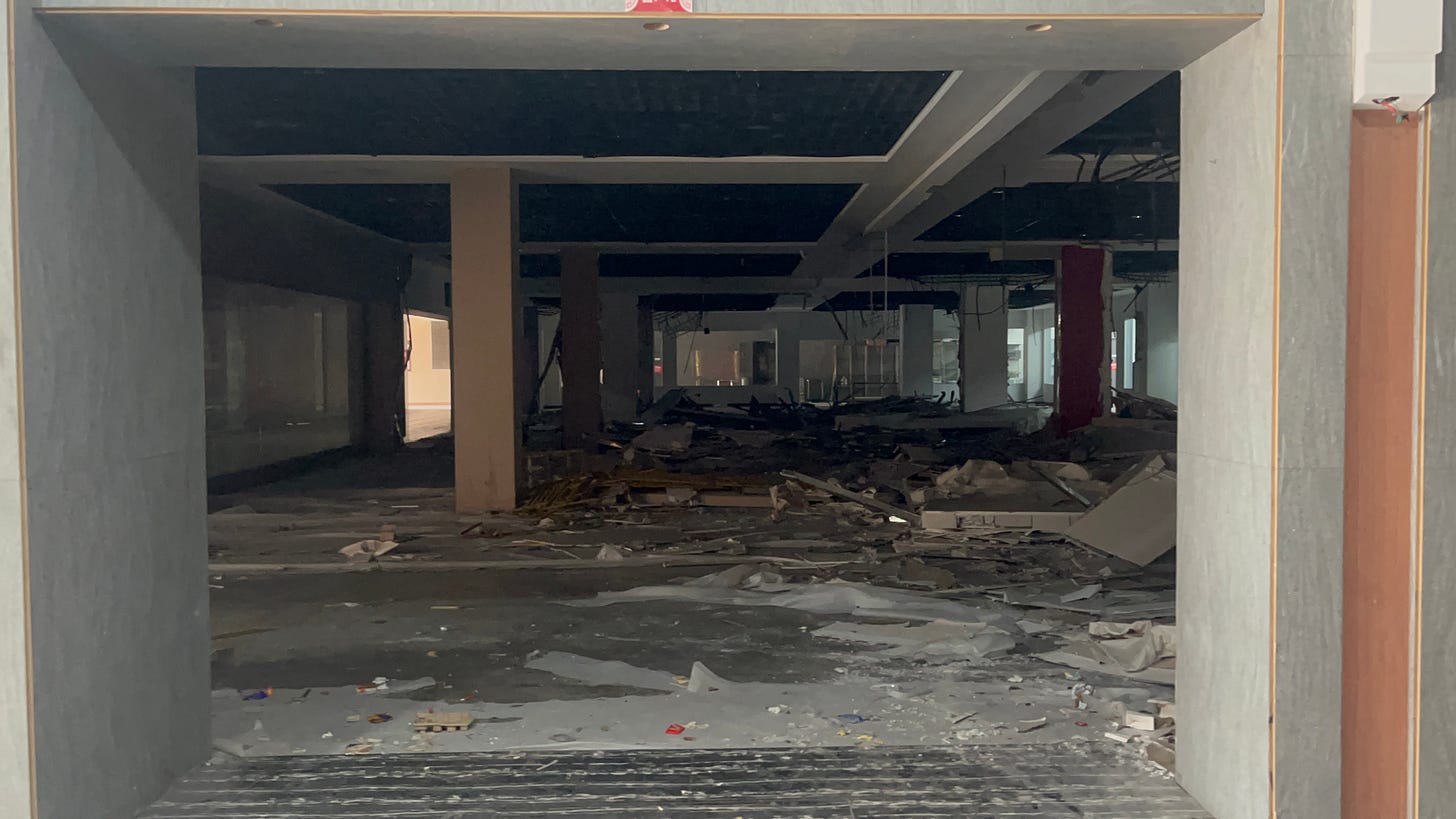
According to Wikipedia, the Yiwu market is the “world’s largest small commodities market.” I thought I might be able to buy some goodies for myself and family, but I actually did not buy a single thing. The only thing I bought was a bottle of water from a machine because I was super thirsty and forgot to bring water. I actually couldn’t pay for it (yet again) because the stupid thing wouldn’t let me sign up after I scanned the QR code. I had to show the information desk lady my screen to ask her to come out of her booth to pay for it for me, for which I’d transfer her money on WeChat.
The market actually didn’t have much in terms of variety, many of the stalls sell the same exact thing, and nothing that anyone I knew would ever need. They had some absurdly cheap drones? Most of the stalls don’t actually seem to be doing any business, or anything for that matter. I would walk by some of the stalls and the person in there would just be watching shortform videos on their phone. Most interesting to me were the ways in which those working there domesticized the space. Some were just socializing in the walkways, and some even did so around small tables with tea. I walked by a group of stall ladies looking at the phone of one of them who was showing videos of her son and bragging about all the 外教 (foreign tutor) she got for him. More often, people were making the items they were selling, especially those selling jewelry, bracelets, and wearable ornaments. Others were busy packaging things into boxes, and I even saw one stall where they had people livestreaming. Along the edges or just in the middle were restaurants that either looked closed or did little business, but perhaps I just wasn’t there at the right hour. Walking through the halls were people pushing carts hawking food or goods.
The amount of stalls probably outnumbered the number of retail shoppers in there like me hoping to buy something for myself. Most of the retail activity was around the jewelry and hair ornaments. Plenty, or all stalls, are clearly just there as basically an office to meet vendors who walk through the market. Then at the backside of the building there is a stream of vehicles on all four levels moving through with people loading them up with sacks and boxes full of stuff to be sent out around the world. Notably, there were some Arabic-speaking vendors who were often walking around with a Chinese person that I can only assume is a service they arrange beforehand to accompany the vendors to speak with those in the market.
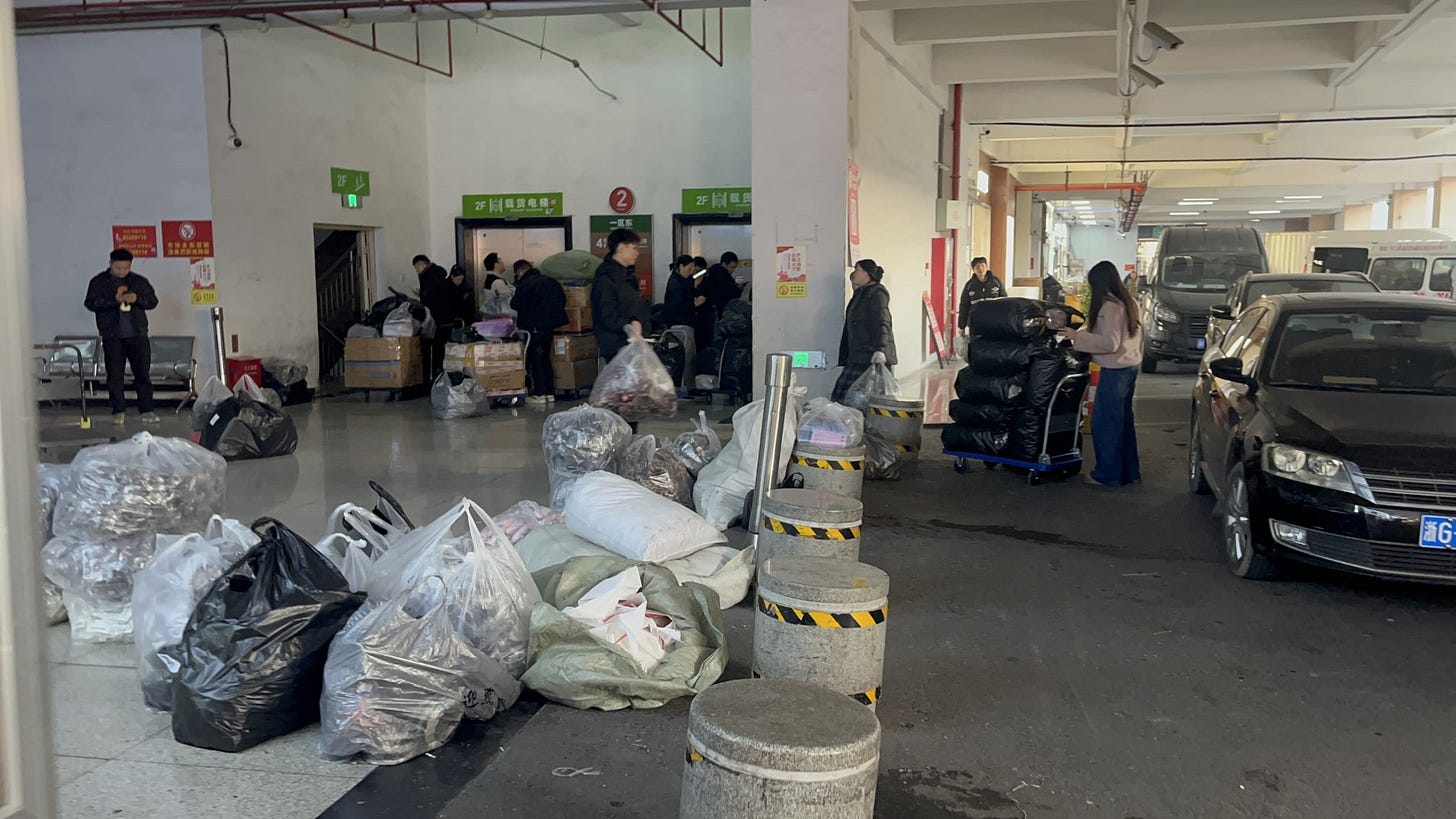
I originally planned on looking only at the electronic goods, frames, decorations, and ornaments. Somehow, I ended up basically walking through almost every section. After about two hours, my feet and legs were cooked. I was shuffling along for ten minutes at a time and then sitting down for five. As I sat down, I thought about how many objects I have at home have touched Yiwu air and fingers. These three cities probably play a large role in the complete takeover of Amazon and Etsy by Chinese sellers. The way these people were plugging away, the volume, the number of people, I’ve only found it increasingly funny that a good portion of Americans are deluded into thinking that tariffs or whatever might win a trade war. The impression I got the longer I stayed was that these people work so hard, they cannot be stopped. Nobody in America besides immigrants would do what these people are doing to make money or just a living. We’re never beating these people (especially if we're anti-immigration). Tariffs might preserve the traces of American manufacturing that remain, but these people are still going to make the money that they ought to, while most regular Americans will feel the pain of higher prices.
What is life like for them? What would it feel like to get up in the morning to commute here for work, think “I am going to my office,” and this stall is the office? What about when they went home, how do they talk about what happened at work? And do they have hopes and ambitions? I’m not going to lie, when I tried putting myself in their shoes in any one of the tiny, cramped stalls, I personally had a hard time imagining how I would make it out. Maybe it’s like Guo Changguang, where they make enough to send their kid to Fudan University, and then it starts there.
Read the next installment here:






